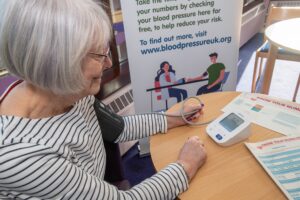Care workers face ‘significantly’ higher coronavirus death rates
People working in social care are twice as likely to die of coronavirus than other working-age adults, according to new figures.
The figures published by the Office for National Statistics (ONS) show those working in social face ‘significantly raised rates of death’ involving coronavirus, compared to other professions in England and Wales.
According to the ONS, there have been a total of 131 deaths involving COVID-19 among social care workers up to, and including, 20 April, with rates of 23.4 deaths per 100,000 males (45 deaths) and 9.6 deaths per 100,000 females (86 deaths).
Overall, the ONS has recorded total of 2,494 deaths involving coronavirus in the working age population of England and Wales were registered up to and including 20 April.
Nearly two-thirds of these deaths were among men (1,612 deaths), with the rate of death involving COVID-19 being statistically higher in males, with 9.9 deaths per 100,000 compared with 5.2 deaths per 100,000 females (882 deaths).
Men working as security guards had one of the highest rates, with 45.7 deaths per 100,000 (63 deaths).
‘There is a tragedy unfolding in care homes and these figures which show men particularly and women working in social care have significantly raised rates of death involving COVID-19 are extremely concerning,’ said NHS Confederation director, Dr Layla McCay.
‘Radical reform is needed in order to keep care homes from being treated as second-class citizens. That means doing our utmost locally and nationally to support this vital provider of care, with the proper PPE, training and support in infection control, as well as adequate funding.’
David Finch, a senior fellow at the Health Foundation, said the figures add further ‘to our understanding of why those in lower socioeconomic groups and in black and minority ethnic communities’ are at significantly greater risk of death from COVID-19.
‘People working in lower skilled occupations were found to have significantly higher mortality rates than people in higher skilled roles. This includes elementary occupations – particularly process plant and security roles – as well as caring, leisure and other service occupations – particularly care workers and home carers,’ said Mr Finch.
‘It also reveals that women made up 75% of workers in the highest exposure risk occupations, who tend to be in frequent contact with people and at higher risk of exposure to disease – including nurses, dental nurses, midwives and veterinary nurses. A fifth of workers in the highest exposure risk occupations are in black and minority ethnic communities, which potentially offers some insight into last week’s data that showed that some BME groups are at significantly greater risk of dying from the virus.’
Photo Credit – Coyot (Pixabay)













